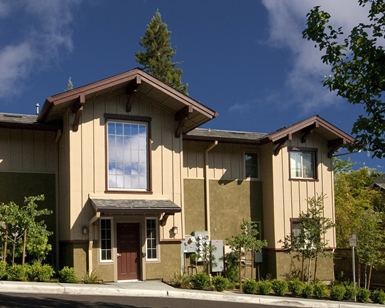San Rafael, CA – Marin County is in the midst of updating its Housing and Safety Elements, plans to accommodate future housing needs and address climate change. Starting this month, staff from the Marin County Community Development Agency (CDA) is seeking input on sites to accommodate the growing housing need in the unincorporated areas of the County. An online public meeting is set for January 20 to go over the process and gather feedback.
The Housing Element update gives the County a chance to make marked progress with racial and social equity. Lower-income residents in the local workforce struggle to find suitable affordable housing close to their Marin jobs. Almost two-thirds of Marin workers commute in from other counties because of local high housing costs, and that takes a toll on traffic, the environment, and quality of life for everyone.
 The Housing Element update is intended to help the County achieve an adequate supply of decent, safe, and affordable housing for residents living in unincorporated areas.
The Housing Element update is intended to help the County achieve an adequate supply of decent, safe, and affordable housing for residents living in unincorporated areas.Marin must plan for future population growth by state law, right along with the other 57 counties in California and all the state’s cities and towns. As part of the next required planning cycle, the County is eager to increase fair housing opportunities for people of all income levels, races, and backgrounds.
A master list of all potential new housing locations under consideration in unincorporated Marin will be released during the online public meeting January 20. The videoconference is to start at 6 p.m.; registration is now open. Spanish translation will be provided.
In spring 2021, the Regional Housing Needs Allocation (RHNA) set by the Association of Bay Area Governments (ABAG) directed Marin to plan for 3,569 new housing units in unincorporated areas during the eight-year cycle that begins in 2023. Those must be distributed among all income categories, from very low to above moderate.
Parcels have been identified as potential housing sites in all areas of the unincorporated County. Land owned by schools, houses of worship, businesses, nonprofits, and the county government is all open for consideration. While housing is allowed in almost all local zoning districts, including commercial, the update to the Housing Element does not exclude potential changes to the maximum density under the existing zoning.
“Public feedback will be a key component of the plan’s development,” said Jillian Nameth Zeiger, a CDA senior planner. “We are introducing the full range of possibilities and asking people their thoughts about meeting the RHNA goal by using these properties. No major decisions have been made at this point. It will be a challenge to meet the allocation, and we want to collect as much public feedback as possible.”
CDA plans to document the feedback and summarize it when the Housing Element update is brought back to the Marin County Board of Supervisors and Planning Commissioners in early March. The Housing Element, along with the accompanying Safety Element, needs to be completed by the end of 2022 so it can be submitted to the State of California for approval.
Zeiger said the shortage of affordable housing has grown more pronounced since the state approved Marin’s last Housing Element update in January 2014. The local median home price has risen from approximately $1.2 million in 2017 to more than $1.6 million in 2021. During the same span, few housing units for the lowest income levels have been constructed.
With the Housing Element update, the intent is to achieve an adequate supply of decent, safe, and affordable housing for residents in unincorporated areas, including individuals, families, retirees, and special-needs populations. One of the major changes to the new Housing Element requirement includes meeting new steps to ensure fair housing and address historical patterns of segregation. Accordingly, the next Housing Element will include an assessment of fair housing to address barriers to fair housing choice and will identify sites and programs that provide housing opportunity for lower-income families and individuals near high quality schools, employment opportunities, and public transportation.
The consequences of noncompliance with housing requirements could be stiff. If a jurisdiction does not meet its goals, it becomes ineligible for state funding to serve local transportation needs and may be subject to statewide streamlining rules, which allow for housing development with limited public review process. California Department of Housing and Community Development (HCD) has a new division that is designed to enforce accountability with plans to meet housing needs.
Related initiatives under the fair housing program include the Restrictive Covenants Project, which aims to inform and educate Marin residents of the history and significance of government policies and programs that were intentionally discriminatory and helped create segregated areas.
CDA staff is engaging in community discussions, speaking at local homeowners associations meetings and design review boards. Trusted community-based organizations, elected officials, and other advocates will help convey messaging about the Housing Element update during the engagement process. Questions and comments can be emailed to staff and phone inquiries can be made to (415) 473-6269. Regular updates can be found on the Housing and Safety Elements update webpage.
Many residents live near town limits or city limits and might be interested in plans brewing across the nearby border. For that reason, there is a new website that includes news about Housing Element updates in all of Marin’s municipalities. Check out housingelementsmarin.org to learn more.
For disability accommodations, please phone (415) 473-6358 (voice), CA Relay 711, or e-mail the Community Development staff at least five business days in advance of the event. The County will do its best to fulfill requests received with less than five business days’ notice. Copies of documents are available in alternative formats, upon request.